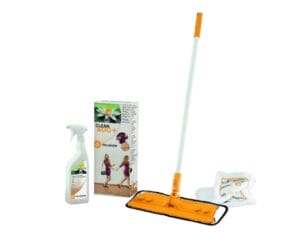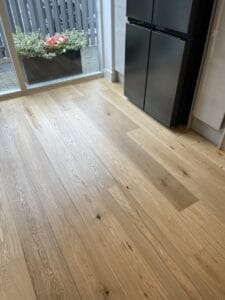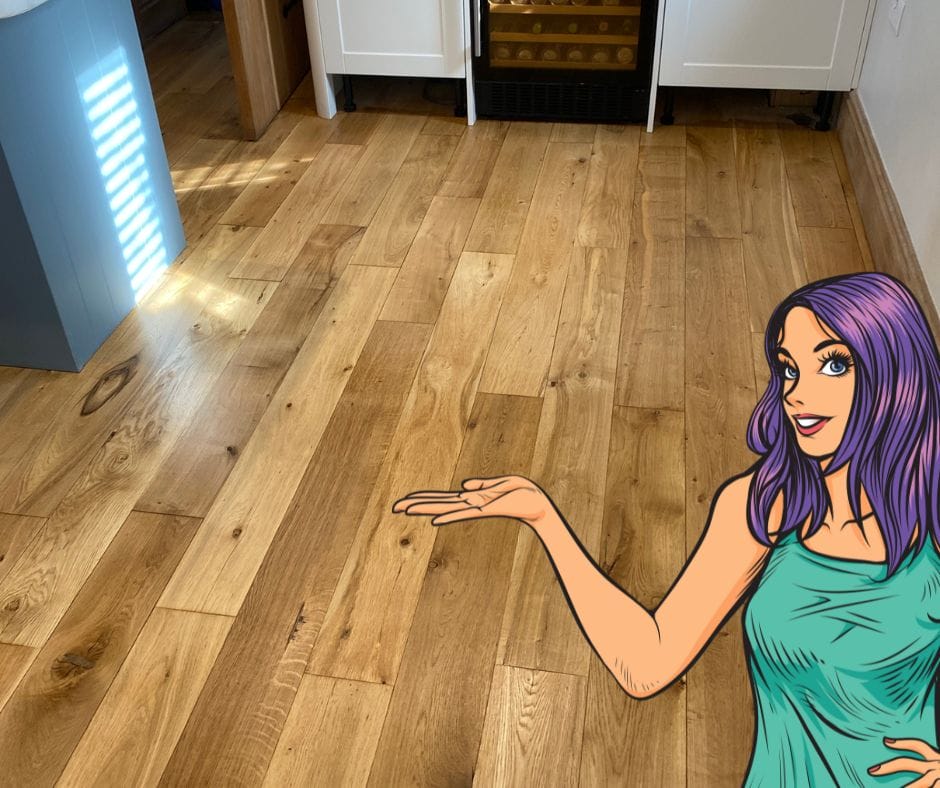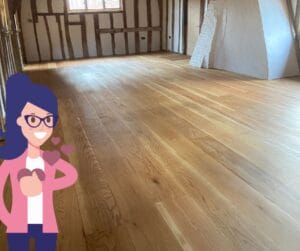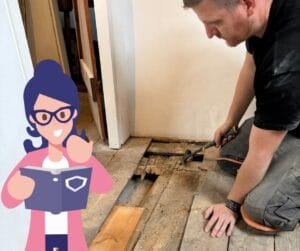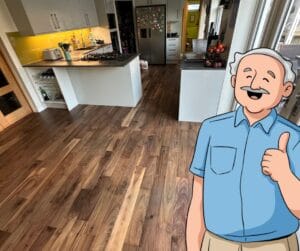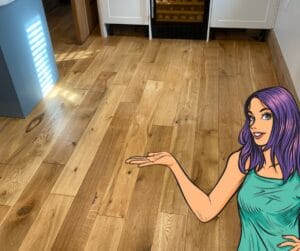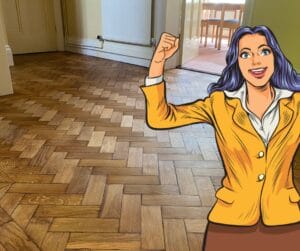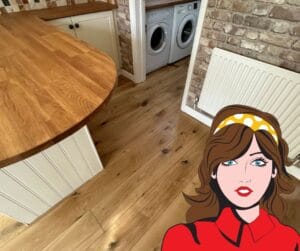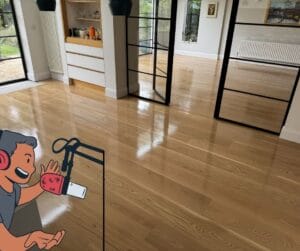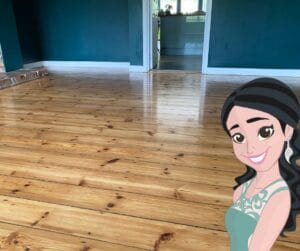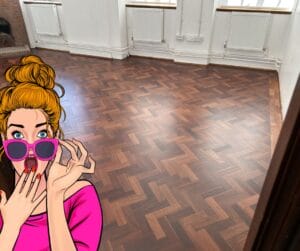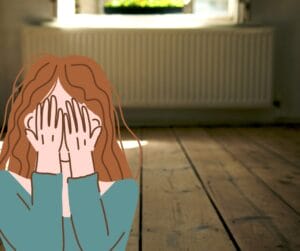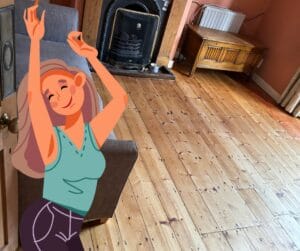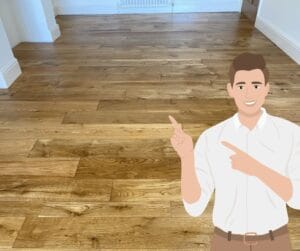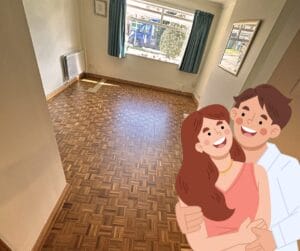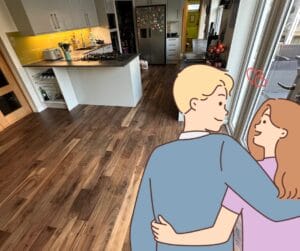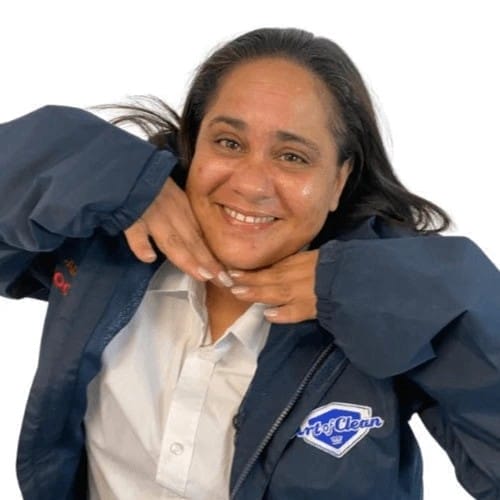There’s something timeless about hardwood floors… the way they add warmth, elegance, and quiet pride to a home. But like all beautiful things, they need looking after.
Whether you’ve just had yours sanded and sealed, or you’ve moved into a home with existing boards, one question always comes up: how do I care for them properly?
This guide walks you through what hardwood floor maintenance actually involves, how it varies depending on your finish, and what to avoid if you want to keep your floors looking their best for decades… not just months.
Looking After Wood Floors: Where it Begins.
At first glance, looking after wood floors seems simple: keep them clean, avoid scratches, and maybe polish them every so often. But once you live with wood underfoot, you start to realise how much it quietly absorbs… not just foot traffic, but dust, damp, pets, children, chairs, spilled tea, and the changing seasons.
The truth is, wood is a living material. It shifts with moisture, wears with use, and responds differently depending on the products and finishes it’s sealed with. Maintenance isn’t just about cleanliness. It’s about protecting the finish that protects the wood.
Cleaning: What You Do Weekly (or More)
You don’t need fancy gear to clean wood floors, but you do need consistency and care. A soft brush, a vacuum with a hard floor head, and a good microfibre mop are all essentials.
Dry dust or grit… especially in hallways or kitchens… can scratch the surface as people walk. That’s why sweeping or vacuuming two to three times a week makes a real difference. You’re not just removing dirt. You’re stopping thousands of tiny abrasions from dulling your finish.
When it comes to mopping, damp is fine. Wet is not. Always ring out your mop properly and use a product designed for your floor type… whether that’s oil or lacquer. And if you’re unsure which finish your floors have, we can help you test it.
Why the Finish Changes Everything
This is where most homeowners get caught out. Not all wood floor finishes behave the same… and that changes what they need in terms of upkeep.
If your floor is finished with a lacquer, it’s sealed with a strong, durable top layer. That means you can’t spot-repair it easily. It resists water and wear well, but once damaged, you’re looking at sanding or full recoating to fix it.
By contrast, oiled floors soak the protective product into the wood. This finish tends to be a little softer, but it’s also more forgiving. If you scratch or scuff a small area, you can often top up the oil locally without sanding the whole room.
Both finishes are excellent… but they age differently, behave differently, and need different care over time. We explain the differences in more detail over on our restoration process page.
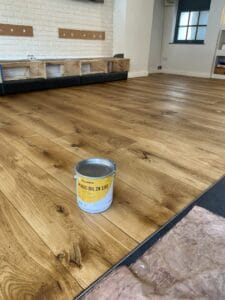
How Oiled Floors Need Looking After
If your floor has a natural or hardwax oil finish, you’ll want to keep a light maintenance routine in place… not just for looks, but to keep the surface sealed and protected from moisture or staining.
That might mean refreshing it with a thin coat of oil every 1 – 2 years in high-use areas like kitchens or hallways. Some homes benefit from using a maintenance oil or oil-compatible cleaner in between full recoats, especially where the floor looks patchy or dull.
The beauty of oiled floors is how easily they bounce back. You can usually deal with small scuffs or wear patches yourself, using the same oil the floor was originally sealed with. But you’ll need to avoid harsh general cleaners… these can strip the oil and leave the surface dry or absorbent.
How Lacquered Floors Behave Over Time
Lacquer creates a tougher barrier. That makes it excellent for families or areas with heavier wear, because it holds up well to moisture and general use. You don’t need to recoat often… some floors go 10+ years before needing attention.
But there’s a trade-off. If the lacquer layer is scratched, worn down, or damaged, it can’t just be patched. Most of the time, the solution is either a screen and recoat (a light sanding followed by a fresh top layer) or full sanding if the damage goes deeper.
Because lacquer isn’t absorbent like oil, it doesn’t blend easily with touch-ups. Trying to reapply over a damaged patch usually makes the difference more visible, not less. This is why regular cleaning and gentle care are so important. Avoiding damage in the first place really is the best maintenance strategy.
Climate and Seasonal Care
Wood reacts to its environment. In winter, heating dries out the air, which can shrink floorboards slightly. In summer, humidity rises… sometimes leading to swelling or slight cupping if there’s moisture present.
To keep your floor stable, it helps to control your home’s humidity. Try to maintain levels between 40% and 60%. A small dehumidifier in summer, or a humidifier in the colder months, can make a real difference.
It’s also smart to protect floors from wet shoes or muddy paws. Mats by the front door, felt pads under furniture, and avoiding dragging anything heavy can all help your finish last longer.
When Is Deeper Maintenance Needed?
Even with perfect daily care, wood floors eventually start to show their age… and that’s completely normal. Over time, sunlight dulls the colour, footfall leaves behind a slight grey hue, and the finish wears thin in areas where people walk most.
That doesn’t mean you need to start again. It might just mean it’s time for a refresh, a screen and recoat, or in some cases, full sanding and refinishing. We offer all of those services… and will always advise what makes the most sense based on the floor you have.
You can see examples of our work or look at the full process here.
If you’re still just browsing or learning about options, our knowledge centre is full of helpful guides.
What to Remember
Hardwood floor maintenance is mostly about small, steady actions that protect your finish and preserve the wood beneath it. Keep dust and grit off the surface. Use the right cleaner. Watch out for seasonal changes. And most importantly… know what your floor is sealed with, because oil and lacquer need very different care.
If you’re not sure, or you’ve inherited a floor without knowing what’s been done to it, just get in touch. We’ll help you test, guide, and plan… whether you want advice, a deep refresh, or just reassurance.
We’re also happy for you to take your time. If you’d prefer to browse quietly and gather ideas, our homepage is a calm place to start.
If you’re considering having wood floors installed and are wondering what options might suit your home, you might find some inspiration at our sister company: Art of Flooring.
Key Takeaways
- Oiled floors need regular re-oiling, but allow easy spot repair.
- Lacquered floors are durable, but harder to patch when worn.
- Cleaning gently and frequently helps your finish last.
- Always match products to your floor’s finish type.
- Control humidity to prevent gaps or movement.
FAQs: Caring for Hardwood Floors
- How often should you clean your hardwood floors?
For most homes, dry cleaning (sweeping or vacuuming) should happen two to three times a week in high-use areas, and at least weekly elsewhere. Damp mopping with a pH-neutral cleaner is fine once a week, as long as your mop is well wrung out. - What’s the difference between oil and lacquer floor finishes? Oil soaks deep into the wood, enhancing its natural look and allowing for easy local repairs, but it needs more frequent maintenance. Lacquer sits on top as a protective coating, offering more durability but less flexibility when it comes to spot repairs.
- Is it okay for you to use a steam mop on your hardwood floors?
No. Steam mops can force moisture into joints and damage the finish or even the wood itself. Stick to dry cleaning methods and lightly damp mops with compatible products. - How do I know when it’s time to re-oil or recoat my floor?
If the surface looks dry, dull, or patchy… especially in high-traffic areas… it may be time to refresh. Oiled floors often benefit from reapplication every 6–24 months, while lacquered floors may only need recoating every 5–10 years, depending on use. - I don’t know what finish my floor has. What should I do?
If you’re unsure whether your floor is oiled or lacquered, it’s best to avoid using any cleaner until you’ve confirmed. We can help you identify the finish and advise the best care… just get in touch.
This is our restoration process in action:

